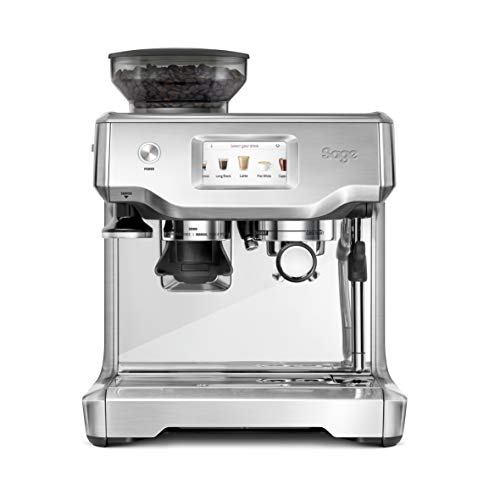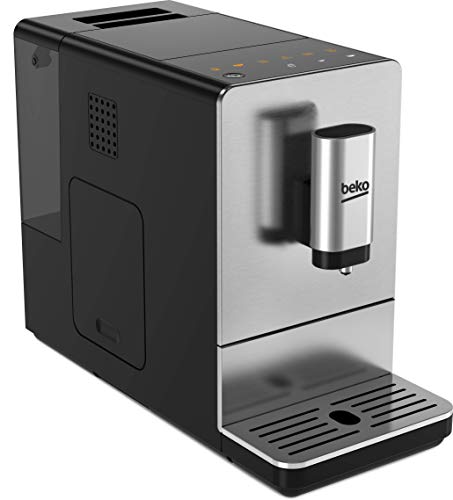Choosing
coffee machine from beans Beans For Your Coffee Machine
The kind of coffee beans you use in your coffee maker is crucial to the quality of your brew. Select fresh, roasted beans with an even flavor profile.
The size of the grind is important too; smaller grinds draw more water. Try different sizes of grinding to find what suits you best.
Single-serve machines
If you are seeking simplicity, a single serve machine might be the ideal choice. They are typically designed to make one cup at a time, which makes them perfect for dorms and desks for offices. Contrary to traditional coffee makers which require a large pot and multiple cups of water, these use pre-ground beans that are sealed in capsules or pods and press them under hot water to extract the grounds and then brew the cup. They are simpler to clean and maintain as they have fewer moving parts. However, they may not produce the most delicious coffee.
Consuming and buying pods could save you time in the morning however, the process isn't environmentally friendly. The amount of coffee waste produced by pods could have circled the Earth 14 times in 2014. And the amount plastic used per cup continues to increase. If you're concerned about the impact on the environment and want to minimize the amount of coffee-related waste, consider a single-serve coffee maker that uses whole beans rather than pods made of plastic, which are typical of these machines.
The grinder in a
coffee bean to cup automatic coffee machine (
cblcos.com)-to cup machine grinds beans to the desired level of fineness prior to making coffee. The machine then forces hot water into the grounds to brew your coffee. This results in an aroma-rich, flavorful cup. The machines offer a broad selection of settings and options that can be customized to create the perfect cup. These include the ability to choose your grind size as well as the strength of your brew and temperature. They also come with a reusable gold filter that eliminates the need to use disposable coffee filters, and some have programmable options that allow you to choose when you want your coffee to be brewed.
Selecting the best single-serve coffee maker is based on your preferences, including the kind of beverages you prefer to drink and how fast you'd like to brew it. Experts suggest taking into consideration aspects like brew capacity and the size of the reservoir for water, as well as whether the machine can be used with reusable pods or an assortment of grounds that can be filled and brewed by hand. You should also think about whether the machine is gravity-based or electric. Electric models are more efficient and more convenient, however gravity-based models are ideal for those who prefer to brew their coffee without an electrical outlet, like campers or hikers.
Compact coffee makers
If you have limited counter space, there are a few compact coffee makers that will still make delicious strong, robust coffee. They typically come with an integrated scoop and can make up to 14 cups of coffee, which means you can easily have plenty to enjoy on your own or share with family members or friends. They are typically low-profile and can fit under cupboards.
Another benefit of a compact coffee maker is that it will typically have a simple and intuitive design. This makes them simpler to use, especially in the case of children or other family members that could help out with your morning cup of coffee. Some models even come with an easy-to-clean dishwasher-safe filter which is an advantage if you prefer to use filters that are reusable.
The Ninja Programmable XL 14-Cup Coffee Maker PRO is a great example of a sleek, simple-to-use and yet powerful compact coffee maker. It brewed hot coffee which was warm for up 4 hours. In addition, the machine has a small footprint and has a clean carafe that's easy to wash and remove. The coffee spout, as the milk spout can be easily removed to clean.

The cost of capsules can add up quickly. They're also often made of plastic and are difficult to recycle. True
coffee bean machines lovers argue that the capped
bean to cup reviews doesn't make the most perfect final product.
This model from Grind, London is a great option if you're tired of wasting coffee pods but don't want to purchase a huge espresso maker. It's a small, metal coffee maker that makes use of water and beans to brew your favorite cup of coffee. It has a visible indicator that tells you when it's fully stocked.
This compact pour-over coffee maker is ideal for kitchens with a minimalist design. It's inexpensive and easy to operate, but may not be the most efficient method of brewing for coffee lovers. It's only 17 ounces, which may be too small for some. It also uses paper filters, which are not environmentally friendly. It's a good choice if you want to streamline your morning routine, and free up valuable counter space in the kitchen.
Espresso machines

Espresso machines are a top-of-the-line piece of equipment used in a wide variety of cafes and restaurants. They function by pushing a small amount of near-boiling water through espresso beans that have been finely ground under pressure that is high. This brewing technique creates espresso and coffee that is extremely nuanced with complex flavors and aromas. It also has a pleasing mouthfeel.
They usually have a reservoir where you fill the water for brewing and a boiler to heat it to the correct temperature, and a portafilter to store the grounds of coffee. They could also include a steam wand for adding milk to make lattes or cappuccinos. They're more sophisticated than single-serve machines, and they generally offer more programmable settings. They also require more frequent maintenance and cleaning cycles.
The majority times you'll be brewing espresso using these machines by placing the scoop of espresso beans into the portafilter, and pressing it down using the lever or pump to apply the appropriate amount of pressure. The portafilter is then cleaned with hot water and lock it in place before making the next shot.
When using an espresso machine, it's important to select the appropriate coffee beans to accomplish the task. A coffee bean that is too oily will leave a sticky residue that could cause a blockage in the coffee grounds chute in between the grinder unit and the brew unit. This can also impact the flavor of your coffee.
A good espresso bean must have smooth, non-shiny surfaces and be free of any flavoring. It's also crucial to choose the right roast for your machine, not one that's too dark or smokey. Dark roasts can have a bitter, burnt flavor that can ruin the whole experience.
Most espresso machines require more frequent backflushing and descaling than other coffee makers, but they're simpler to maintain. They're often built with self-cleaning features as well as a special filter that helps to stop the buildup of scale. You'll have to follow the instructions of the manufacturer to clean and descale depending on the model. These products can be purchased at a variety of places, including online and in the majority of grocery stores.
Coffee grinders
Freshly ground beans are sought-after by many coffee lovers. Grinding whole beans before brewing helps prevent the loss of essential oils that give your coffee an aroma and depth. While there are ways to grind beans manually however, some prefer the convenience of an appliance that stores and grinds them, and then dispenses the perfect amount before the brewing process begins. There are many models that combine a grinder with an brewing machine.
The most popular type of coffee grinder that is included in a brewer is an electronic burr grinder. It uses two flat burrs that have sharp ridges to crush coffee beans. This provides a consistent grind size, and a more flavorful experience than blade grinders. The burrs can be adjusted for optimal performance and there are many grind settings available to meet your needs.
Other grinders available include manual burr grinders. They are less expensive, but they require some elbow grease in order to function. The grinding produced by these models are not as fine as those generated by electric models, but you can adjust them to your desired results.
Blade grinders are cheaper than burr mills, and they employ an axel for cutting beans. They can result in unevenly ground beans, and can be noisy during the grinding process.
Certain grinders generate static which can attract particles and cause them to clump together. This can affect the quality of your coffee and cause clogged grinders and hoppers. Some grinders have anti-static technology, but you can also reduce the risk by running a humidifier, or dampening your beans prior to grinding.
Although the majority of models on the market come with a grinder, it's important to think about how much you're willing to spend and how often you'll use it prior to deciding which coffee maker equipped with a grinder is right for your home. While the majority of models are affordable, a few can cost upwards of $800 for a top coffee maker with a built-in brewer. If you're looking for an affordable, yet high-quality product should look for one with a high-end burr grinder and an enormous hopper that can hold up to half a 1 pound of beans.